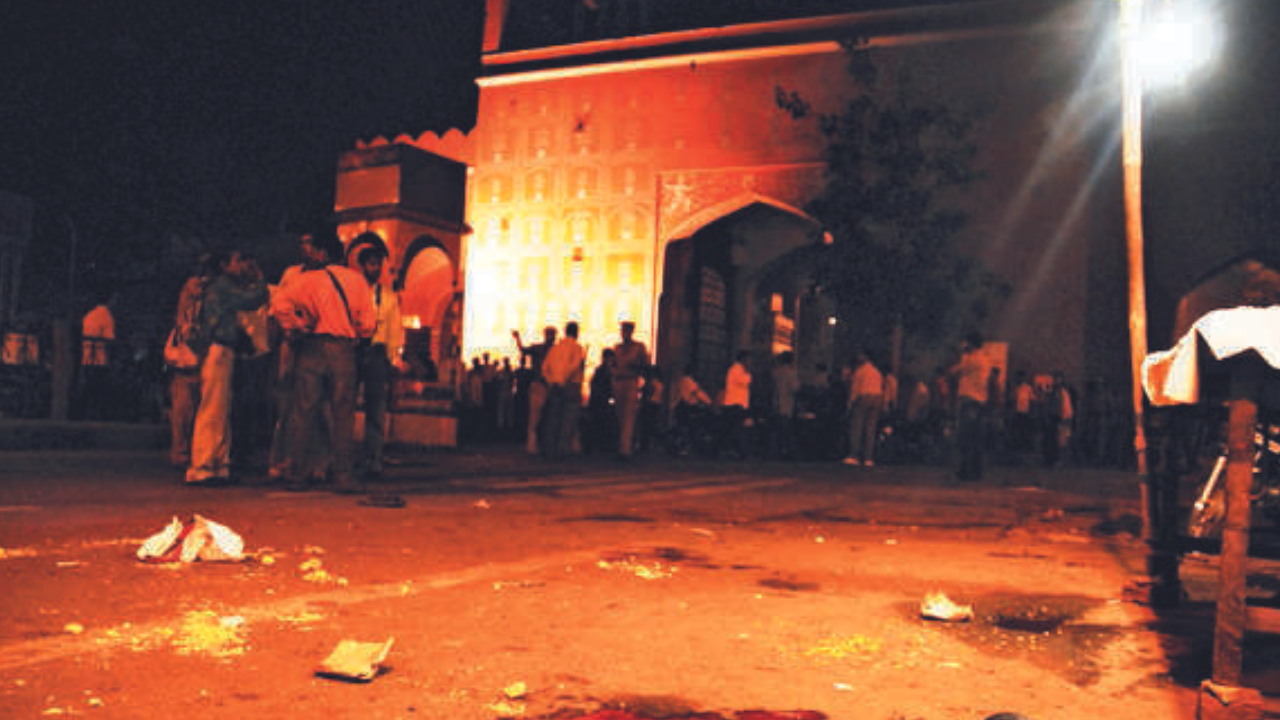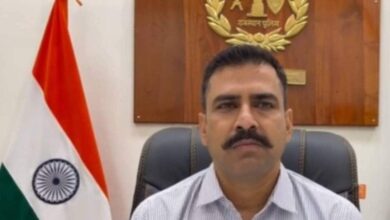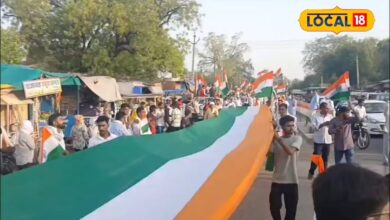Rajasthan
Nobody knows who butchered 80 people, courtesy shoddy probe | Jaipur News
Fifteen years have passed since a series of blasts in Jaipur claimed 80 lives and left over 170 people injured, no one yet knows the perpetrators of the bloodshed.
Justice remains a far cry for survivors and families of the May 13, 2008 terror strikes as the Rajasthan High Court on March 29 acquitted four persons sentenced to death for the blasts.
Every year, the city wistfully looks back at the warm May evening when dark clouds of smoke enveloped the bustling lanes of Chandpol, Chhoti Chaupar, Tripolia Bazar, Tripolia Gate, Badi Chauper, Manak Chowk, Johari Bazar, Sanganeri Gate.
Terror had struck at the very heart of the state capital. By night, the SMS Hospital was beginning to fill with the remains of victims most of whom had shrapnel injuries.
It was the city’s first brush with terror. By midnight, after the mangled remains of victims were moved to the hospital, investigators searched the epicentres of the eight blast sites and discovered that high-intensity explosives were strapped onto bicycles. Later, then DGP AS Gill said the blasts were a terror attack.
While agencies first suspected the involvement of a Bangladesh-based terror outfit, their probe did not yield much success.
A few months later, the Rajasthan police established the Anti-Terrorist Squad (ATS) to investigate terror cases and collect information on banned outfits like Indian Mujahideen (IM).
In August 2008, police arrested Shahbaz Hussain. In December, the ATS arrested Mohammad Saif and accused him of planting bombs at Manak Chowk. Sarwar Azmi, the third accused, was held on January 29 for allegedly planting bombs at Chandpole Hanuman Temple. Saifur Rahman was arrested on April 2009 for allegedly planting explosives near Chhoti Chaupar, and Mohammad Salman was held in December 2010 explosions at Sanganeri Gate Hanuman Temple.
They all were charged with murder, criminal conspiracy, the explosives substances act, and the Unlawful Activities (Prevention) Act. The agencies later claimed that the alleged kingpin-Aatif Amin was killed in the Batla House encounter in 2008.
The prosecution built its case around the statements of Saif, who was arrested during the encounter in which Amin was shot dead. The statements of 1,296 witnesses were recorded, 1,272 in favour of the prosecution and 24 for the accused. As many as 800 pages of documents were submitted and 50 Supreme Court rulings were cited.
On December 18, 2019, a special court in Jaipur pronounced Saif, Azmi, Salman and Rahman guilty. The court acquitted Hussain for want of evidence. On December 20, the court announced the death penalty for the four convicts.
However, on March 29, the high court acquitted all four convicts citing a “flawed and shoddy” investigation, “insufficient” understanding of the legal process and the prosecution’s failure to corroborate material presented as evidence during the trial.
The division bench upheld Salman’s plea that he was a minor aged 16 years and 10 months at the time of his arrest. The court slammed the ATS for the manner in which it went about probing the case and directed the DGP to review the process and initiate action against cops who were part of the investigation. The chief secretary was asked to monitor the inquiry.
The court noted that investigation agencies approached the case in a callous manner, unbecoming of members of uniformed posts. “The approach of the investigation agency was plagued by insufficient legal knowledge, lack of proper training and insufficient expertise of probe procedure,” it said.
After facing a lot of criticism, the government sacked additional advocate general (AAG) Rajendra Yadav and filed a special leave petition (SLP) before Supreme Court.
Justice remains a far cry for survivors and families of the May 13, 2008 terror strikes as the Rajasthan High Court on March 29 acquitted four persons sentenced to death for the blasts.
Every year, the city wistfully looks back at the warm May evening when dark clouds of smoke enveloped the bustling lanes of Chandpol, Chhoti Chaupar, Tripolia Bazar, Tripolia Gate, Badi Chauper, Manak Chowk, Johari Bazar, Sanganeri Gate.
Terror had struck at the very heart of the state capital. By night, the SMS Hospital was beginning to fill with the remains of victims most of whom had shrapnel injuries.
It was the city’s first brush with terror. By midnight, after the mangled remains of victims were moved to the hospital, investigators searched the epicentres of the eight blast sites and discovered that high-intensity explosives were strapped onto bicycles. Later, then DGP AS Gill said the blasts were a terror attack.
While agencies first suspected the involvement of a Bangladesh-based terror outfit, their probe did not yield much success.
A few months later, the Rajasthan police established the Anti-Terrorist Squad (ATS) to investigate terror cases and collect information on banned outfits like Indian Mujahideen (IM).
In August 2008, police arrested Shahbaz Hussain. In December, the ATS arrested Mohammad Saif and accused him of planting bombs at Manak Chowk. Sarwar Azmi, the third accused, was held on January 29 for allegedly planting bombs at Chandpole Hanuman Temple. Saifur Rahman was arrested on April 2009 for allegedly planting explosives near Chhoti Chaupar, and Mohammad Salman was held in December 2010 explosions at Sanganeri Gate Hanuman Temple.
They all were charged with murder, criminal conspiracy, the explosives substances act, and the Unlawful Activities (Prevention) Act. The agencies later claimed that the alleged kingpin-Aatif Amin was killed in the Batla House encounter in 2008.
The prosecution built its case around the statements of Saif, who was arrested during the encounter in which Amin was shot dead. The statements of 1,296 witnesses were recorded, 1,272 in favour of the prosecution and 24 for the accused. As many as 800 pages of documents were submitted and 50 Supreme Court rulings were cited.
On December 18, 2019, a special court in Jaipur pronounced Saif, Azmi, Salman and Rahman guilty. The court acquitted Hussain for want of evidence. On December 20, the court announced the death penalty for the four convicts.
However, on March 29, the high court acquitted all four convicts citing a “flawed and shoddy” investigation, “insufficient” understanding of the legal process and the prosecution’s failure to corroborate material presented as evidence during the trial.
The division bench upheld Salman’s plea that he was a minor aged 16 years and 10 months at the time of his arrest. The court slammed the ATS for the manner in which it went about probing the case and directed the DGP to review the process and initiate action against cops who were part of the investigation. The chief secretary was asked to monitor the inquiry.
The court noted that investigation agencies approached the case in a callous manner, unbecoming of members of uniformed posts. “The approach of the investigation agency was plagued by insufficient legal knowledge, lack of proper training and insufficient expertise of probe procedure,” it said.
After facing a lot of criticism, the government sacked additional advocate general (AAG) Rajendra Yadav and filed a special leave petition (SLP) before Supreme Court.





